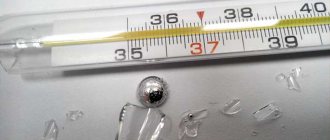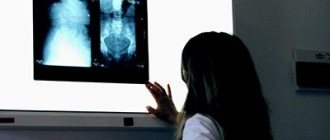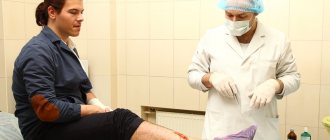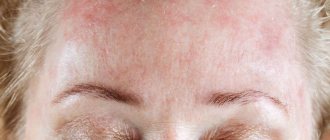Anonymously
Around the clock
Attention! The material contains information about substances, the use of which can cause serious harm to your health!
Neuroleptics are antipsychotic drugs that are used to treat severe mental conditions such as mania, hallucinosis, or psychosis. Despite their widespread use in medical practice, tranquilizers are also used to achieve a drug “high”: this leads to the development of severe pharmaceutical dependence.
- What are neuroleptics?
- The effect of neuroleptics on the body
- Signs of antipsychotic drug use
- Side effects from antipsychotics
- Contraindications
- Types of antipsychotics
- Typical antipsychotics
- Atypical antipsychotics
- New generation neuroleptics
- The safest antipsychotic
- Neuroleptics without sedation
- List of antipsychotics
- First generation neuroleptics
- Second generation neuroleptics
- Neuroleptics of the latest generation
- Consequences of neuroleptics
- Neuroleptics and alcohol
- Antipsychotic drug poisoning
- Dyskinesia from neuroleptics
- Insomnia
- Disorders of the nervous system
- Overdose of antipsychotics
- FAQ
- When are antipsychotics prescribed?
- What is neuroleptic syndrome?
- Can you buy antipsychotics without a prescription?
- How to get off antipsychotics? Help from specialists at the Zdravnitsa clinic
Treatment prices:
| Service | Price, rub) |
| Types of therapies | |
| Standard detoxification therapy | 3 500 ₽ |
| Double Detox Therapy | 6 000 ₽ |
| Enhanced Detoxification Therapy | 7 500 ₽ |
| Maximum detoxification therapy | 9 500 ₽ |
| Quick sobering up at home | 7 500 ₽ |
| Hospital at home 1 day | 22 000 ₽ |
| Advanced hospitalization | 15 000 ₽ |
| Treatment in hospital | |
| Accommodation | |
| Economy chamber (6 beds) | 2 000 ₽ |
| Standard room (4 beds) | 3 000 ₽ |
| Increased comfort (2 seater) | 5 500 ₽ |
| VIP chamber (1 person) | 12 500 ₽ |
| Individual post 24/7 | 5 000 ₽ |
| Medical and social rehabilitation 21 days | 140 000 ₽ |
| Service | Price, rub) |
| Initial consultation with a narcologist | for free |
| Consultation with a psychologist | 3 000 ₽ |
| Psychiatrist consultation | 5 000 ₽ |
| Coding at home Torpedo | 7 500 ₽ |
| Express output and encoding (doublet) | 13 500 ₽ |
| Coding using the Dovzhenko method | 12 000 ₽ |
| Hypnosis classic session | 13 000 ₽ |
| Ericksonian hypnosis session (NLP) | 8 000 ₽ |
| Coding method Torpedo | 5 500 ₽ |
| Double block | 8 000 ₽ |
| Esperal injection for 1 year | 9 900 ₽ |
| Tetlong for 3 months | 10 500 ₽ |
| Esperal gel for 1 year | 15 000 ₽ |
| Selincro course of therapy | 12 500 ₽ |
| Implantation of Disulfiram for 1 year | 18 000 ₽ |
| Vivitrol injection for 1 month | 26 000 ₽ |
| Naltrexone stitching for 3 months | 35 000 ₽ |
| Neuroimplantation Prodetoxon for 6 months | 47 500 ₽ |
| Narcopsychotherapy session | 50 000 ₽ |
| Neutralization of encoding | specify |
| Psychodiagnostics / pathological diagnostics | 7 500 ₽ |
| Psychotherapy session | 5 000 ₽ |
| Family psychotherapy | 6 000 ₽ |
| Outpatient rehabilitation in Moscow | 33 000 ₽ |
Expand
We will select an individual treatment plan
Free consultation 8-800-200-27-23
Signs of antipsychotic drug use
To reduce the side effects of antipsychotic drugs, antidepressants and other stimulants are used in psychiatric practice. The selection of relevant pharmaceuticals requires a long time and careful monitoring by medical personnel.
Recreational use of tranquilizers leads to dramatic changes in a person's appearance and behavior. If the behavior and appearance of a loved one has changed, you should pay attention to the following symptoms of drug addiction:
- Reduced reaction speed, general inhibition;
- Slow speech;
- drooping eyelids;
- Drowsiness, hypersomnia;
- Sudden weight loss or gain;
- Pallor of the skin and mucous membranes;
- Decreased intellectual abilities;
- General negligence of appearance. Due to weakness, the addict neglects personal hygiene, cleaning the apartment, and so on.
Some drug addicts combine taking tranquilizers with alcohol. As a result of this combination, the liver is destroyed, which leads to serious illness and changes in appearance: brittle hair, nail plates, yellowing of the skin, and so on.
MOTIVATION OF A DEPENDENT FOR TREATMENT
Side effects from antipsychotics
The doctor prescribes antipsychotics based on the patient's medical history and current condition. Vigilance helps minimize the harm of antipsychotics. Independent, inept use of drugs leads to adverse reactions, the development of addiction and undesirable mental states. Due to recreational use, addicts face the following side effects:
- General excitement;
- Anxiety;
- Uncontrollable desire to move due to discomfort in the limbs;
- Impaired liver and kidney function;
- Hypersomnia;
- Sleep disturbances;
- Endocrine disorders, incl. development of metabolic disorders leading to weight gain;
- Diseases of the cardiovascular system.
Good news
A new antipsychotic for the maintenance treatment of schizophrenia from the Janssen company, part of the Johnson & Johnson pharmaceutical division, Trevicta, has been registered in Russia. It has a long-lasting effect and can be used only 4 times a year, that is, every three months, which is much better than monthly injections of long-standing antipsychotics.
Trevicta is now an antipsychotic with the longest dosing interval registered in our country. It maintains its optimal concentration of paliperidone in the patient’s blood for a long time, which is why it requires such rare use.
Prescribe three months of Trevicta to patients with a stable condition after treatment with other drugs. It helps reduce the risk of relapse due to its prolonged action, has a low risk of side effects, and does not create withdrawal syndrome if treatment is abruptly stopped. This makes it possible for a patient with schizophrenia to socialize and maintain his constant normal state.
Contraindications
Antipsychotics should not be taken simultaneously with alcoholic beverages. Some drugs should not be used during pregnancy and lactation, or for people with acute heart, kidney or liver diseases. Each drug has its own list of contraindications. In this regard, the over-the-counter sale of antipsychotics is strictly prohibited.
Ambulatory treatment
Indications for use
Antipsychotics are prescribed for mental and psychoneurological disorders accompanied by delusions, hallucinations, pseudohallucinations, illusions, thinking disorders, behavioral disorders, psychotic agitation, aggressiveness, and mania.
Sometimes these drugs are effective in treating depression, deficiency symptoms - pathological lack of will, apathy, emotional flattening, autism. A number of studies point to the fact that antipsychotics eliminate deficit symptoms by reducing delusions, hallucinations, or depression. The most common indications for the prescription of antipsychotics are diseases such as:
- schizophrenia
- bipolar affective disorder
- dementia with behavioral disturbances
- exogenous psychoses (alcoholic, stimulant)
- behavior disorders of excitable, hysterical type
- neurotic, neurosis-like disorders (in small dosages)
Types of antipsychotics
There are several types of tranquilizers that are used to treat mental disorders, as well as for premedication before surgery.
Typical antipsychotics
Typical antipsychotics are effective in suppressing severe mental conditions but cause chronic fatigue syndrome. These include Haloperidol, Chlorprothixene, Sulpiride, Chlorpromazine and other medications.
Find out treatment recommendations without leaving home for free
To select a treatment plan, you just need to leave a request, we will contact you to select the time and specialist you need
Submit your application
Atypical antipsychotics
Unlike typical ones, such antipsychotics have a milder effect and are easier to tolerate. Due to the peculiarities of their effect on the dopamine system, atypical drugs do not cause severe inhibition and have a less extensive list of side effects.
New generation neuroleptics
The pharmaceutical market is replenished with new generation drugs that have a gentler effect on the patient. The fact is that in severe mental illnesses, antipsychotics are taken for life. To minimize side effects, newer drugs combine CNS depression and low hepatotoxicity.
The safest antipsychotic
To select the safest group of tranquilizers, the doctor relies on the following factors:
- Preference for new generation drugs;
- Presence of kidney, liver, etc. diseases;
- Tendency to develop certain pathologies;
- Determination of a safe dose of the drug.
The doctor prescribes the safest tranquilizers that do not harm the patient and help normalize well-being. Taking antipsychotics without taking into account the rules for using such drugs only leads to adverse reactions.
Neuroleptics without sedation
Second generation drugs do not cause severe sedation. Taking them promotes healthy sleep and relief from mania: at the same time, a person’s sanity is preserved. Despite this, excessive use leads to the development of pharmaceutical addiction.
What are the most popular antipsychotic drugs?
Among the most popular drugs in this group are:
- Ariprizole;
— Servitel;
— Azaleptin;
— Sulpiride;
- Tiapride.
Many drug names coincide with the main active ingredients. It is difficult to say which is the safest antipsychotic. Since each group of antipsychotics differs in its physiological effect on different body systems. But medical experts are confident that the drug Clozapine has the least pronounced side effects and can be used as a powerful antipsychotic with a powerful antipsychotic effect.
The strongest drugs are based on butyrophenone, and the weakest on indole.
List of antipsychotics
Neuroleptics are classified not only by the characteristics of their effect on dopamine receptors, but also by the generation of the drug.
First generation neuroleptics
First generation drugs include derivatives of thioxanthene, phenothiazine, and butyrophenone. They quickly relieve unwanted mental states and are often used to treat psychosis. Such drugs include Fluphenazine, Haloperidol, Chlopromazine, etc.
Second generation neuroleptics
Second generation drugs have a milder effect on dopamine receptors and low hepatotoxicity. According to research, taking such drugs (especially Quetiapine) has a lesser effect on metabolic processes. Second generation drugs include:
- Risperidone;
- Quetiapine;
- Clozapine;
- Sertindole;
- Ziprasidone.
Neuroleptics of the latest generation
The latest generation of drugs have less impact on the endocrine, cardiovascular systems, and liver. The most popular new antipsychotics include Clopixol-acufase and Clopixol-depot.
Consequences of neuroleptics
Self-administration of tranquilizers leads to the development of severe mental syndromes. As a result of prolonged, uncontrolled and excessive use of antipsychotics, mental retardation, loss of memory, and intellectual functions develop; Severe pathologies of the liver, brain, and central nervous system develop.
Group classes in
Neuroleptics and alcohol
Taking alcohol together with tranquilizers leads to complications such as poisoning leading to coma, toxic liver damage, psychosis, and even sudden cardiac arrest.
Antipsychotic drug poisoning
There are several symptoms of antipsychotic poisoning:
- Nausea, vomiting;
- Severe weakness and dizziness;
- Dry mouth;
- Ataxia;
- Impaired reflexes and reactions;
- Decreased or absent reaction to light;
- Loss of consciousness;
- Pulse depression;
- Reduced blood pressure;
- Convulsive attacks, foaming at the mouth.
If symptoms of poisoning appear, seek immediate medical attention.
Dyskinesia from neuroleptics
Uncontrolled use of antipsychotics (especially the first generation) leads to the development of dyskinesia, non-infectious hepatitis, cirrhosis and other damage to the liver and gallbladder.
Insomnia
Akathisia, a common side effect due to the use of antipsychotics, can include anxiety, panic, and insomnia. As a result of disturbances in the biochemical processes of the brain, disturbances in sleep and alertness occur.
Workbooks
Disorders of the nervous system
Other consequences of recreational use of tranquilizers include disorders of nervous activity. Lethargy, memory deterioration, and suppression of natural reflexes occur. Due to the lack of regular use of an antidepressant, psycho-emotional disorders occur, including depression.
Rehabilitation specialists
Overdose of antipsychotics
Symptoms of an overdose of antipsychotics include:
- Deterioration in coordination of movements;
- Decreased blood pressure and pulse;
- Dizziness;
- Nausea, vomiting;
- Loss of consciousness;
- Coma;
- Heart failure.
In case of an overdose, it is necessary to urgently rinse the stomach using the “restaurant” method, but only if the person is conscious. You should call an ambulance doctor to your home.
How drugs affect the body
Such medications are prescribed only in cases where it is not possible to reduce emotional stress by other means. Neuroleptics can neutralize hallucinations, delusions, and panic attacks that occur in a person. The drugs do not have a hypnotic effect, but in large doses there is a sharp decrease in the body’s energy level, which entails rest and falling asleep.
Experts also prescribe them to neutralize the effects of drugs or hallucinogenic substances.
When describing what antipsychotics are and how they work, one cannot fail to mention the physiological effect on the brain. Under the influence of active substances, the reticular formation of the brain is inhibited. Against this background, the patient’s level of depression may even decrease and the emotional state may normalize.
Literature
- “SIDE EFFECTS OF NEUROLEPTICS. MALIGNANT NEUROLEPTIC SYNDROME.” Esina A.I., Purveev S.S., Nekrasov M.S. (2019);
- “The use of neuroleptics and poisoning with them in medical practice.” Arustamyan O.M., Tkachishin V.S., Kondratyuk V.E., Alekseychuk A.Yu. (2019);
- “Pharmacoepidemiological analysis of the effectiveness and safety of classical and atypical antipsychotics.” Andreev Boris Vladimirovich, Vilyum Irina Alexandrovna, Kurylev Alexey Alexandrovich (2010);
- “Atypical neuroleptics risperidone and paliperidone in pharmacological and chemical-toxicological terms.” Bulatov Ruslan Maratovich (2011);
- “Current trends in drug addiction in Russia and Western countries.” Shulgina Elena Viktorovna (2019);
- “The drug situation in Russia and new patterns of drug use.” Pozdnyakova Margarita Efimovna (2016).
Article verified by an expert
Terekhova Anna Vladimirovna
psychologist-consultant on socio-psychological work with addicted clients and their families. More than 10 years of experience.
Similar articles:
Stages of recovery for a drug addict or alcoholic
White Chinese: drug effect, consequences
How to help a loved one with a salt overdose?
Why is family therapy important?
How to quit lyrics?
Antipsychotics (neuroleptics) are one of the classes of psychotropic drugs and serve as a means of treating schizophrenia and psychoses of other origins, as well as psychomotor agitation. In addition, antipsychotics (along with mood stabilizers) are used in the treatment of bipolar affective disorder, and are also used to enhance (augment) the action of antidepressants in the treatment of depression and anxiety-related disorders.
First- and second-generation antipsychotics (typical and atypical antipsychotics) are characterized by approximately equal effectiveness in the treatment of schizophrenia, but differ in tolerability; Second-generation antipsychotics are less likely to cause side effects and complications of therapy, therefore they are recommended as first-line drugs and are more widely used in clinical practice.
Indications for the use of antipsychotics in child and adolescent psychiatry (in some countries and for individual drugs) also include impulsive and aggressive behavior, including in patients with autism spectrum disorders and mental retardation.
In recent decades, in many countries, including the European Union, the USA, and the Russian Federation, there has been a clear trend towards an increase in the use of antipsychotics. At the same time, along with the general more frequent use of antipsychotics, experts note an almost universal significant increase in the cases of prescription of these drugs to children and adolescents [1, 2], as well as their off-label use, and the proportion of such cases, according to some data, accounts for 40 to 75% of all prescriptions [3].
According to the Belgian national medical register Farmanet, from 2005 to 2014, the number of antipsychotic prescriptions in Belgium increased by 53%, while the use of antipsychotics in the treatment of children and adolescents increased by 75.5%. Prescription rates for aripiprazole especially increased, which was only to a small extent offset by a decrease in prescribing of other antipsychotics [1]. In 2014, 21 antipsychotics were used in child and adolescent psychiatry in Belgium, mainly risperidone and aripiprazole, and often off-label. In some cases, antipsychotics were used in the treatment of children under 6 years of age and even under 2 years of age. The authors note that similar increases in the use of antipsychotics have been observed in other European countries and outside Europe, and emphasize that the clinical rationale for prescribing antipsychotics in many cases is seriously questionable [1].
Analyzing data on the treatment of approximately 2 million children in Germany in 2004–2011, C. Schröder et al. (2017) report an increase in the use of antipsychotics from 2.0 to 2.6 per 1000 minors with a decrease in the frequency of prescription of drugs to children under 6 years of age from 2.42 to 0.48, while the use of off-label antipsychotics in different years amounted to 61 ,0-69.5% of all cases, and most often the drugs were prescribed for aggressive and impulsive behavior in children with hyperkinetic disorder. The authors emphasize in conclusion that the effectiveness and safety of such therapeutic measures require clarification in the course of further research [2].
Experts from the Medical University of Gdansk note an increase in the use of antipsychotics in pediatrics in the Pomeranian Voivodeship of Poland and especially emphasize the increase in the number of prescriptions of drugs to patients under the age of 4 years; the authors report that risperidone and chlorprothixene are the most commonly used drugs [4].
Due to the limited space of the article, we presented data from studies in three European countries, but similar trends towards an increase in the use of antipsychotics in child and adolescent psychiatry with a high proportion of off-label prescribing are observed in many European countries.
A group of specialists from the United States, citing the relative paucity of American epidemiological studies of the use of antipsychotics in child and adolescent psychiatry in comparison with similar European studies, note an increase in the frequency of prescription of these drugs to patients aged 13 to 24 years, but not to patients aged 12 years and younger, during the period from 2006 to 2009. The authors reported that the most common diagnosis for antipsychotics prescribed to children and adolescents was attention deficit hyperactivity disorder, and when prescribed to young adults, it was depressive disorder. They emphasize that in child and adolescent psychiatry, cases of prescription of antipsychotics for the purpose of influencing impulsive and aggressive behavior predominate in quantitative terms over cases of use of these drugs for their intended purpose, namely for the treatment of psychosis [5].
Based on a meta-analysis of 39 studies (including 365,449 patients aged 11.4 ± 6.2 years, 70% male) assessing the incidence of diagnosis of autism spectrum disorder and/or mental retardation among all cases of antipsychotic prescriptions in children, adolescents and young adults or prescribing antipsychotics for autism spectrum disorders and mental retardation, it was found that one in ten cases of antipsychotic prescriptions are for autism spectrum disorders and/or mental retardation, and one in six young patients taking antipsychotics suffers from autism spectrum disorders. The researchers note an increase in both proportions in recent years and conclude the article with the expected and fairly standard conclusion that the clinical rationale and results of the use of antipsychotics in children, adolescents and young adults with autism spectrum disorders and/or mental retardation require further in-depth study [6] .
As mentioned above, second-generation antipsychotics (atypical antipsychotics) have a higher overall tolerability than first-generation drugs (typical antipsychotics), but are more likely to cause metabolic disorders, including weight gain and obesity, increased blood glucose levels and provocation. type 2 diabetes mellitus, hyperprolactinemia and lipid metabolism disorders.
Weight gain and other metabolic disorders associated with the widespread and not always rational use of second-generation antipsychotics in children and adolescents represent a special and very significant problem in pediatrics [7].
It must be emphasized that data on the adverse effects of the widespread use of second-generation antipsychotics in pediatric practice does not mean that they should be replaced by typical drugs with even lower tolerability; We are talking about the need for more limited and careful prescribing of antipsychotics as such to children and adolescents.
Noteworthy are the results of a study conducted in Florida (USA) on the adverse effects of prescribing antipsychotics to preschool children (under 6 years of age) with an analysis of the frequency of treatment complications such as diabetes mellitus, obesity, hyperlipidemia, hyperprolactinemia, cardiovascular diseases (including arterial hypertension and ventricular arrhythmia) and extrapyramidal symptoms (including dystonia, akathisia, parkinsonism and tardive dyskinesia) [8]. According to this article's estimate, antipsychotics are most commonly associated with extrapyramidal symptoms and obesity: 57 and 19 cases per 1000 person-years, respectively. The predominance of certain types of side effects correlated with the duration of the drug course: short (up to 1 year) and long (from 1 to 7 years). The authors report more frequent cases of obesity (23.8 vs. 9.6; p<0.001) and dystonia (7.2 vs. 2.5; p<0.05), but less frequent observations of akathisia (44.4 vs. 60; 6; p<0.05) in children with a long course of treatment compared with children who received antipsychotics for no more than 1 year. Ventricular arrhythmia and other cardiovascular disorders, hyperprolactinemia, parkinsonism and tardive dyskinesia occurred rarely (less than 2 cases per 1000 person-years). At the same time, extrapyramidal disorders were more often detected in younger (under 2 years old) preschoolers compared to older ones (4-5 years old) and more often in black children compared to white children. The authors also point out the need for additional controlled studies to improve the safety of antipsychotic therapy when prescribed to preschool children [8].
One of the most dangerous complications of treatment with antipsychotics is the development of type 2 diabetes mellitus [9].
According to a systematic review by B. Galling and C. Correll [10], antipsychotics increase the risk of developing type 2 diabetes in children compared with mentally healthy peers and children suffering from similar mental disorders but not receiving antipsychotics. The greatest risk is associated with olanzapine, followed by quetiapine, aripiprazole and risperidone. It is emphasized that type 2 diabetes mellitus is relatively rare in childhood and young adults, and antipsychotics can increase the risk of its development, so these drugs should be prescribed to children, adolescents and young adults only if alternative treatment approaches are ineffective. The authors note the limitations of their findings and the need for further research.
Meta-analysis of 13 studies including 185,105 patients (59.5% male) treated with antipsychotics from 2 to 24 years of age (mean age 14.1 years) and 310,438 person-years, 7 studies involving 1,342,121 psychiatric control group patients (2,071,135 person-years) and 298,803 healthy control group individuals (463,084 person-years) showed that the cumulative risk of developing type 2 diabetes in young patients receiving antipsychotics is 5.72 per 1000 people, and the incidence of diabetes is 3.09, which significantly exceeds the corresponding indicators in the control group of patients in a psychiatric clinic (2.09 and 1.79) and the control group of healthy people (2.58 and 3.02).
According to these findings, the risk of developing type 2 diabetes in young patients receiving antipsychotics is associated with olanzapine, male gender, and longer follow-up.
The study concludes with the need for a balanced approach to prescribing antipsychotics to young patients, reducing the duration of therapy and early monitoring of its safety [9].
The most common and visible adverse effects of antipsychotic therapy in children and adolescents are weight gain and obesity, which are among the main reasons why patients stop taking antipsychotics. Weight gain and obesity in children and adolescents due to the use of antipsychotics is often accompanied by hyperglycemia (as a possible predictor of further development of type 2 diabetes), hyperlipidemia and hypercholesterolemia [11].
A dynamic assessment of the condition of 147 patients with an average age of 12.8 years, who had not previously received antipsychotics, and during the observation period taking one (116 people, 79%) or two (31 people, 21%) second-generation antipsychotics, showed a significant (12.8 kg) increase in average body weight, increase in body mass index by an average of 0.44; the average fasting glucose level increased by 0.29 mmol/L during treatment. The incidence of overweight/obesity was 22.6%, an increase in body mass index of more than 0.5 was noted in 9.4% of cases, with an identical indicator for changes in fasting glucose levels; Type 2 diabetes mellitus was detected in 3.1% of patients. There were no significant differences in metabolic changes between patients receiving one or two antipsychotics [12].
The results of a nested case-control study of 5369 patients under 18 years of age with autism spectrum disorders showed that second-generation antipsychotics are the only significant risk factor for the development of obesity in this category of patients, and the degree of risk correlates with duration treatment and drug doses, while concomitant use of antidepressants contributes to weight gain only to a small extent [13]. According to some data, treatment with clozapine and olanzapine is more associated with overweight and obesity when compared with other antipsychotics [14].
The risk of weight gain due to antipsychotic use is inversely proportional to age: young patients are more susceptible to this side effect, while the younger the patient, the higher the likelihood of its occurrence, and weight gain in children is higher on average than in adolescents [14— 16].
The medical and social significance of excess body weight as a side effect of antipsychotic therapy is determined by a decrease in quality of life and an increase in the risk of premature deaths [14].
The data of W. Ray et al. deserve the closest attention. (2019), who analyzed the medical records of 189,361 patients aged 5 to 24 years who received antipsychotics under Medicaid approval in the state of Tennessee (USA) between 1999 and 2014. Based on the data obtained, the authors conclude that prescription antipsychotics at a dose of 50 mg or higher in chlorpromazine equivalent to children, adolescents and young adults increases the risk of premature death from cardiovascular and metabolic causes by 80%. It is noted that the 4-5-fold increase in fatal risks in connection with therapy is not associated with either injuries as a result of excessive sedation or overdose of antipsychotics for suicidal purposes, and it is emphasized that we are talking specifically about deaths caused by heart and vascular diseases and metabolic disorders [17].
A cohort study of electronic health records from GP practices, hospitals and schools in Wales covering 1,488,936 children between 1999 and 2015 found that use of antipsychotics (most commonly prescribed for intellectual disability/autism) was associated with an increased risk of developing respiratory symptoms. diseases, epilepsy, diabetes (regardless of psychiatric diagnosis) and trauma (in children with intellectual disabilities/autism).
The article concludes by noting that in UK child psychiatry, antipsychotics are more often prescribed for behavioral disorders than for psychosis, and suggests that this results in excessive unnecessary public health costs [18].
Frequently discussed issues of antipsychotic therapy include the comparative tolerability of individual drugs, which requires special analysis in a separate article, and in the next paragraph we present only isolated data from two studies.
The maximum incidence of metabolic disorders, including hyperprolactinemia, decreased carbohydrate tolerance and weight gain, is associated with taking olanzapine, clozapine, risperidone and paliperidone, as well as amisulpride, while quetiapine does not change prolactin levels, and aripiprazole, according to some data , may even reduce its content in the blood plasma [19, 20].
It is clear that other studies may show different findings than those reported here, but there is no doubt that the metabolic disturbances resulting from antipsychotic use require specific preventive and therapeutic measures.
Metformin has the greatest proven effectiveness in correcting overweight and obesity in children and adolescents in connection with treatment with antipsychotics [14, 21—23]. It has also been shown that metformin is more likely to prevent weight gain when prescribed concomitantly with antipsychotics than to reduce its excess caused by these drugs [24]. There are also grounds for the assumption that metformin is able to prevent or delay the development of pharmacogenic type 2 diabetes mellitus, however, this assumption, as well as the question of the effectiveness and safety of the use of metformin (especially off-label) in pediatric practice, requires clarification in the course of further controlled studies. research.
Along with metformin, topiramate and, to a lesser extent, reboxetine are superior to placebo in the correction of excess body weight caused by antipsychotics [23, 24].
The analysis allows us to conclude that the global trend towards more frequent prescription of antipsychotics to children and adolescents should be considered as definitely negative, since unjustified antipsychotic therapy, firstly, worsens the physical health of patients, and secondly, damages the health care budget due to costs on unnecessary drugs and the need for subsequent treatment of cardiac and metabolic disorders caused by these drugs.
We share the opinion of a number of experts that antipsychotics, especially off-label, should be prescribed to children and adolescents only when treatment has failed using therapeutic approaches with lower therapeutic risks and with careful laboratory monitoring of cardiac and metabolic function [9]. .
According to evidence-based recommendations for antipsychotic therapy in children and adolescents, the prevention and correction of metabolic disorders caused by second-generation antipsychotics require monitoring of the following indicators: body weight, waist circumference, levels of prolactin, cholesterol, triglycerides and glucose in the blood, liver tests, thyroid hormone levels [25]. It should be added that the listed indicators should be assessed both before the start of therapy and regularly throughout its duration.
According to the staff of the University of Minnesota (USA), the prevention and correction of excess body weight due to antipsychotic therapy in children and adolescents should be carried out on the basis of the following principles: choosing an antipsychotic with minimal metabolic effects, changing the antipsychotic if metabolic disorders occur and their pharmacological correction, first of all metformin [7].
In our opinion, the effectiveness of metformin in the treatment of metabolic disorders associated with the use of antipsychotics allows us to raise the question of the need to include this drug in the clinical guidelines used in Russian child and adolescent psychiatry.
It is likely that mood stabilizers (mood stabilizers), including lithium and valproate, should be considered as a definite alternative to antipsychotics in the correction of behavior disorders in children and adolescents with autism spectrum disorders. The value of the latter in the treatment of autism, given its high neurological comorbidity, is determined not only by its normothymic, but also by its antiparoxysmal properties [26]. Both lithium and valproate are able to reduce impulsivity and aggression with significantly lower therapeutic risks compared to antipsychotics, which, in our opinion, gives them particular value in child and adolescent psychiatry.
The authors declare no conflict of interest.
Due to their main purpose, in the English-language literature these drugs are sometimes called antischizophrenic drugs.
Early monitoring of the safety of therapy, in our opinion, should include laboratory monitoring of biochemical and hormonal parameters, starting from the period preceding the prescription of antipsychotics.
The effectiveness of sibutramine and the combination of metformin with sibutramine has been shown to reduce excess body weight caused by antipsychotics, however, in many countries sibutramine is not approved for use due to side effects and, in our opinion, can hardly be considered as a safe drug for children and adolescents .
Similar recommendations apply to adult patients taking second-generation antipsychotics.
Apparently, the decrease in impulsivity and aggression under the influence of lithium largely determines its anti-suicidal properties, which are important for adolescent medical practice.









